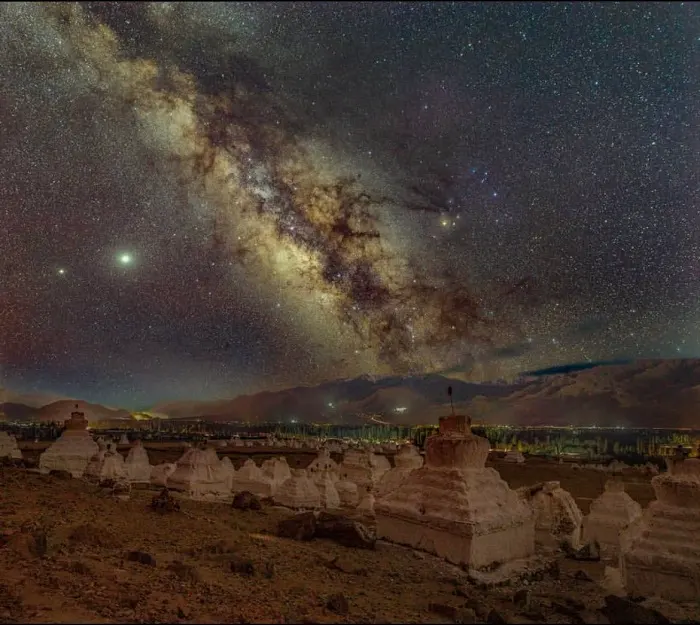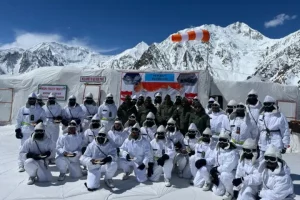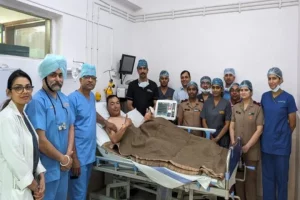India’s first-ever ‘Night Sky Sanctuary’ will be set up in Ladakh within the next three months, Science and Technology Minister Jitendra Singh said after meeting the Union Territory’s Lt. Governor R K Mathur in New Delhi on Saturday.
The proposed Dark Sky Reserve will be located at Hanle in Ladakh as a part of Changthang Wildlife Sanctuary. It will boost Astro tourism in India and will be one of the world’s highest-located sites for optical, infrared, and gamma-ray telescopes.
The Ladakh Autonomous Hill Development Council (LAHDC), the Indian Institute of Astrophysics (IIA), and the UT administration signed a tripartite MoU for launching the Dark Space Reserve. The site will have activities to boost local tourism and the economy through interventions of Science and Technology.
Singh said that all the stakeholders will jointly work towards the preservation of the night sky from unwanted light pollution and illumination, which is a serious threat to scientific observations and natural sky conditions.
It may be noted that Hanle is best suited for the project as it is located in Ladakh’s cold desert region, away from any form of human disturbance and clear sky conditions and dry weather conditions exist throughout the year.
The #HanleDarkSkyReserve will be the 1st such reserve in India & Lt. Governor @R_K_Mathur stated that the #HDSR would not only cater to the needs of the scientific community but will also contribute to the economic development of the region through #astro_tourism/#eco_tourism. pic.twitter.com/TJMGgCeH4w
— Office of the Lt. Governor, Ladakh (@lg_ladakh) June 16, 2022
The minister also said that a high-level delegation of scientists and officials from the Central Leather Research Institute (CLRI) in Chennai will visit Ladakh by the end of this year to explore the possibility of setting up a regional branch. Ladakh has a very rich and wide variety of animals for leather research and promotion of the bio-economy of animal skin-derived products.
Charthang in Ladakh has over 4 lakh animals, mainly pashmina goats, besides sheep and yak. Singh also complimented CSIR for organising four training workshops, two each at Leh and Kargil for the treatment of diseases of famous Pashmina goats.
The minister also thanked the Ladakh Administration for taking the decision to start the commercial plantation of Leh Berry, which is gaining popularity in the entire region. The Council of Scientific and Industrial Research (CSIR) under the aegis of the Union Ministry of Science and Technology is promoting Leh Berry which is an exclusive food product of the cold desert and also a means of wide-ranging entrepreneurship, as well as self-livelihood.
Singh said that, as per the vision of Prime Minister Narendra Modi’s Ladakh visit in 2018, the local entrepreneurs will be provided gainful employment through farming, processing, and marketing of about 100 odd products from sea buckthorn plants like jams, juices, herbal tea, Vitamin-C supplements, healthy drinks, cream, oils, and soaps in a completely organic manner.
The Lt. Governor informed that commercial cultivation of three medicinal plants will begin this spring season at the height of above 15,000 feet. This also includes ‘Sanjeevani Booty’, locally known as ‘Sola’, which has very high life-saving and therapeutic properties.
Singh conveyed to Ladakh LG that from next year, the Department of Science and Technology will establish a distinct and huge pavilion for Ladakh Education Fair, which will be an annual feature.
Also Read: Leh’s Hanle observatory could become the world’s favourite for star gazing




















